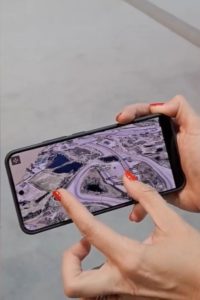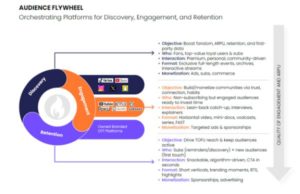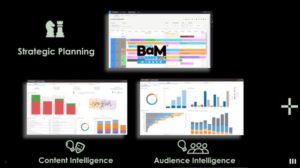
Rebekah Wilson, CEO and co-founder, Source Elements
Once a technology becomes an inseparable part of a fundamental human characteristic such as communication, that technology is no longer a neutral tool. It starts to shape and be shaped by humans in a collaborative way. What fundamentals must we be aware of so we can optimize remote technology for those who create, monitor, review and approve time-based media?
Remote collaboration is shaped by and for us
Any collaborative act can be made remote. The only question is, what do we lose in the process? For time-based media creators, we demand collaborative systems to be aligned with the specific, exacting demands of our complex, task-specific collaboration workflows, while being reliable enough that we can trust the same technology to not interrupt our creative flow. Additionally we seek rewarding experiences that satisfy us as social human beings: experiences that bond us as we enact our performative roles together. A human-focused approach encourages more collaborators online for workflows such as remote recording for ADR, overdubbing and interviews; review and approval, for live and playback sessions; or any other real-time interaction related to the production of time-based media.

Remote workflows are fundamental
Why we started working remotely is practically a non-issue in 2023: we live in a post-pandemic world. Why the world continues to embrace working remotely even after travel restrictions can be summarized by four main reasons:
- Accessibility: for reasons of distance, geography, disability, cost, family, lifestyle.
- Relationship building: good feedback is crucial to a project’s success which relies on participants having open communications. Remote workflows foster stronger relationships by enabling more frequent real-time interactions between participants, a secondary effect being that of building familiarity through exposure, and therefore leading to higher trust.
- Environmental: an hour of synchronous remote work between two participants emits about 15 grams/ 0.52 oz of CO2. For comparison, an average new car emits around 112 grams per km / 3.9 oz per mile of CO2 (European Environment Agency, 2020)
- Creative solutions: creators who actively use remote technologies to create specific forms of media, such as song-writing, AR/VR, and multiverse are creating experiences that do not and cannot exist in traditional formats, thus forming new markets and new cultural formats.
Remote workflows are inconvenient
Time-based media creators looking to work together in real-time over the internet must overcome technical challenges such as latency, compression restrictions, acoustic and noise degradation, secure file access and storage management, tool integration, and so on—each according to their specific workflows, toolsets and corporate and government regulations. The design of any technology typically involves the tool maker identifying target markets and developing features accordingly. Thus, off-the-shelf remote collaboration software generally caters instead to universal, commercially viable workflows prioritizing speech intelligibility and echo cancellation, rather than media production workflows. Despite these obstacles, remote collaboration, even using software that only meets our minimal requirements as media creators, has become an increasingly valuable tool for creators and their stakeholders seeking to save time and costs.
For all the benefits of remote work, people will invariably choose being together over working over a distance. This suggests that the remote collaboration experience is lacking: at some point we prefer to not do things remotely rather than be forced into uncomfortable environments. Remote collaboration systems can also lose our trust by being unreliable, unresponsive, not giving us enough information when they fail, not giving us opportunities to get to know our fellow collaborators so we can build relationships.
Some of what is missing in remote collaboration is:
- Informal interactions, such as running into people in the hallways and kitchens
- Restricted and interrupted listening: high latency makes it difficult to have fluid conversations for long periods of time, and compression and two-dimensional displays limit our sensory input and therefore ability to trust what we are seeing.
- Cultural references: who provides the reference in time? In a typical studio environment, we would enter and the engineer manages the session. The client on the sofa, the talent in the booth, they can have informal chats in-between the work.
- Remote exhaustion: When we are in the same room together, we have established norms when we need to pay attention: in remote situations we are always paying attention because we don’t have normal cues to indicate when we are needing to give our attention, so we get quickly exhausted.
- Timezones! The biggest unsolved challenge yet, that of the need to live our lives according to sleep patterns and daylight access as the earth rotates.
- Technological risk: we do not all yet have intuitive tacit knowledge for remote systems and feel safe using it in professional settings.
- Security: our media and systems must be transported and transferred securely so we can trust to share them.
- Access to technology: software quality, network latency, ease of use, cost, access, training etc.
The way we work remotely is not the way we work when we are together. We’ve been trying to put square pegs through round holes, so it’s time to talk about trade-offs.
Remote workflows work when we make trade-offs
Evidently based on recent years of many, many successful remote projects, remote collaboration works suitably well even given the limitations: this is because we adapt and make things work, or we choose what not to do when being remote: we make trade-offs. Human interaction evolved to work under certain conditions: being in the same place, at the same time, with a certain agency as prescribed by cultural protocols according to the situation. Technology has given us a new kind of space, where the original rules don’t work so well and how we manage trust, truth and communication is equally dependent on the ways that technology allows us to interact. By understanding how and why those interactions are modified, interfered with and interrupted—according to the interfaces we use—allows us to not only design improved interfaces but to better cope and “stay with the trouble” (Nevejan, 2020). Clearly, given the proliferation of remote messaging and communication tools that have flooded our twenty-first century lives, it is critical to us as humans to make the effort and choose to be together in time even under nonideal conditions, versus choosing to not be together in time and work asynchronously and perhaps slower and less efficiently.

How to succeed in remote collaboration with time-based media
A well-designed remote collaboration environment must be both suitably sophisticated to manage and aid participants so they can perform their role, yet simple enough to operate without needing extensive training—better: no training at all, where interfaces are intuitive and allow us to behave naturally. Natural behavior requires that we feel safe within the environment. We feel most safe when we can act: this means having agency within the software process. Our ability to act in any situation is characterized by our level of autonomy, reactivity, pro-activity and communicativeness within any system. We can increase agency by adding elements of intentionality, knowledge, belief, choice and obligation (Tanaka, 2006).
Designing remote collaboration systems successfully will mean that we must pay attention to re-using existing, natural interaction modes where possible rather than forcing new ones. We must consider playful, informal areas to encourage social interactions and foster relationships such as safe, unrecorded channels for communications, while making it obvious when work is happening and when it is not. More efficient technology will allow for shorter sessions: avoiding remote-fatigue. Asynchronous interactions allow those who cannot be there to participate in other ways, such as recorded playback and time-based comments. And as participants, we must seek to extend our remote relationships outside of the online environment—travel to conferences, set up meetings with our counterparts when possible, get to know each other as friends. Where human imagination is paramount, we will find ways to be social. By knowing how humans like to work—and enjoy working—we are led toward design patterns that are not only functional but transformative.
Find out more about Source Elements and remote collaboration at www.source-elements.com









